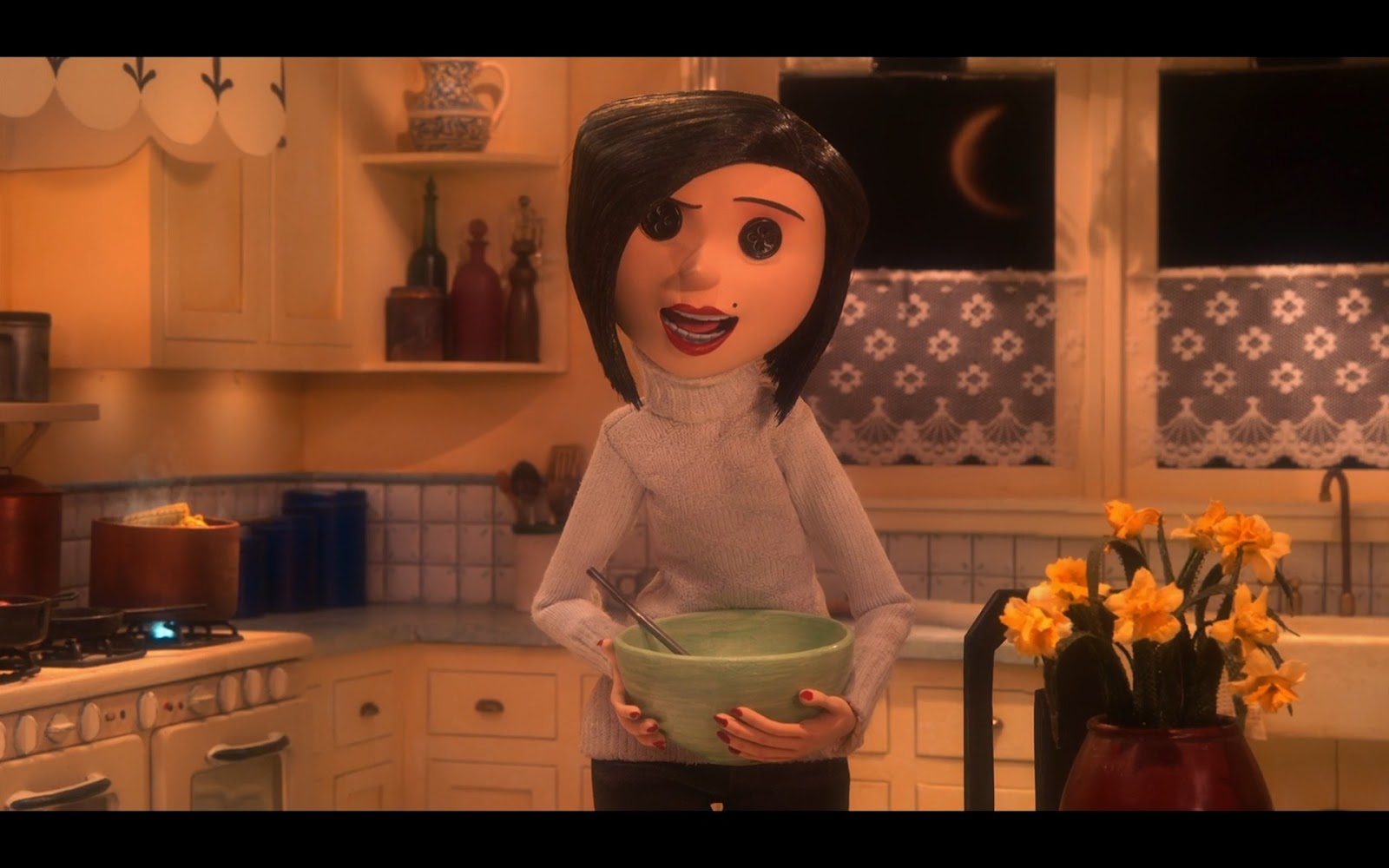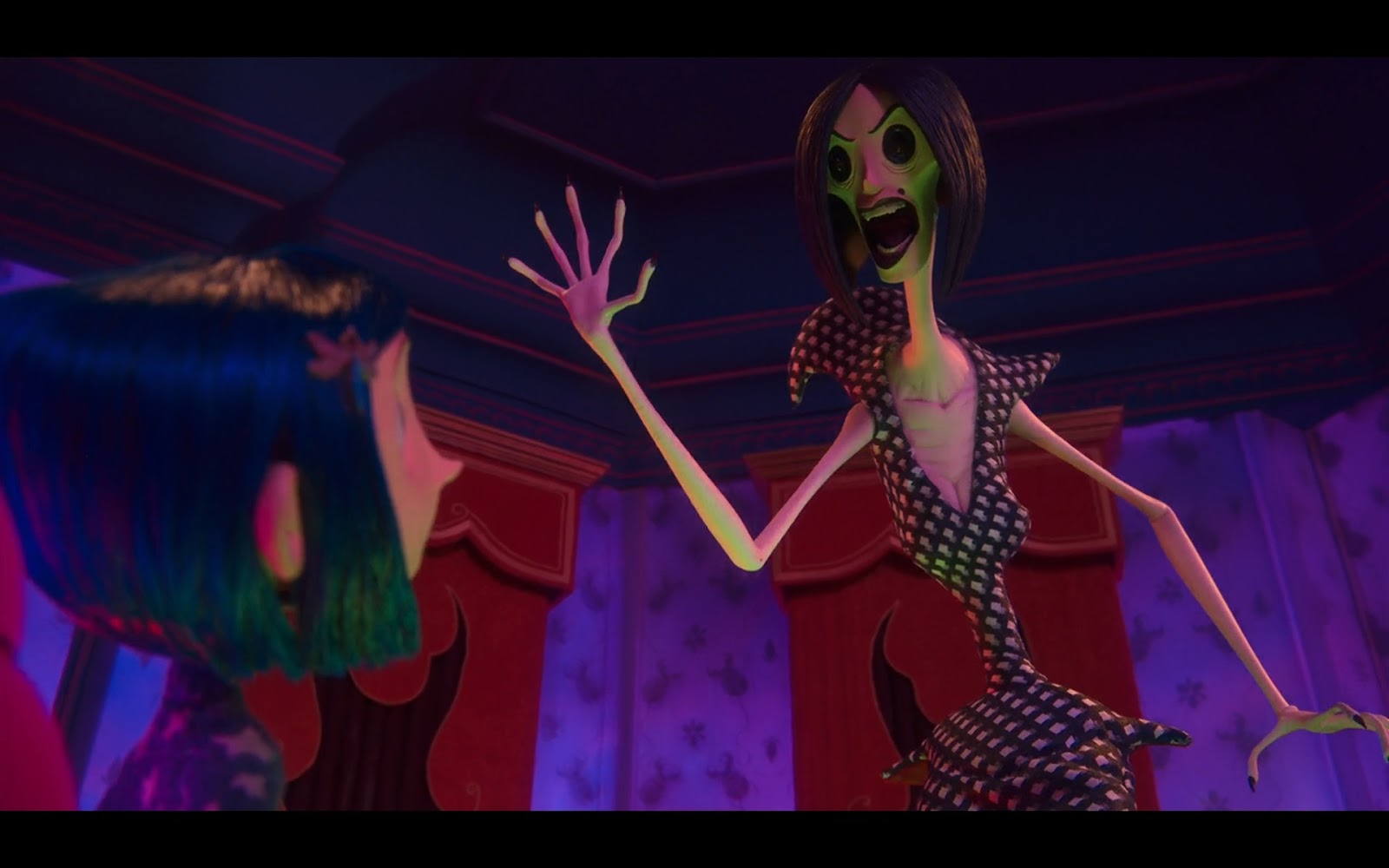What are we learning? In film study, we learnt about the 'Lighting and Colour' that were used in Coraline. We had to write one paragraph in one of the scenes in Coraline, explaining the lighting and colour that were used in that scene. The purpose of those colours; why the director did that on purpose and the effects and impacts on the viewer.
How does this work show my learning? This shows my learning because I have understood the director's purpose when using the colours and try to match with the scene.
What am I wondering as a result of this learning? I wonder how the next topic about Coraline constrast the others.
This is the scene where Coraline met the ‘other mother’ for the first time. In this scene, the other mother is holding a pastel green bowl, there are a bunch of yellow flowers on a pot. The colour that was used in this scene is pastel and vibrant orange. As you can see, they used the colours in the background; the cupboard, walls, oven and window rails. When using these colours, you feel warm and fuzzy, it manipulates us into thinking that the intentions are good and innocent.
They used the middle long shot, I can tell it was a middle long shot because the object is showing relation to the background/surroundings. It gives a connection to the audience with what is happening in the scene. The director used this location to show the audience the homey and cosy place in a house, which is the kitchen including the dining area. Where all the family members come together to eat and discuss.

As the film goes on to where the ‘other mother’ shows her true colours, Coraline finally realised that she, Beldam, was a monster. She found out that every nice thing that the other mother has done for her was all the trap. It was her plan to trap Coraline inside the ‘dark world’, in the dark world, everyone had black button eyes, which is very creepy and odd. In this scene, the neon purple worked well with the navy blue colours on the ceiling and dark red on the cabinets. There were also green, white and orange highlights on both Coraline and the other mother which made the scene even more intense and gave the viewers a scare.

This is the scene where the other mother has fully transformed into a hideous monster. They used green shades on this scene, especially on the other mother’s characters. It is petrifying because of the colours they used, it’s amazing how they were able to match the colours in scenes like these. It gave the audience wonder, if the protagonist, Coraline, will surrender and give up her eyes and soul or finds a way to escape.

I would like feedback on my work so that I'll know what my next steps are.








